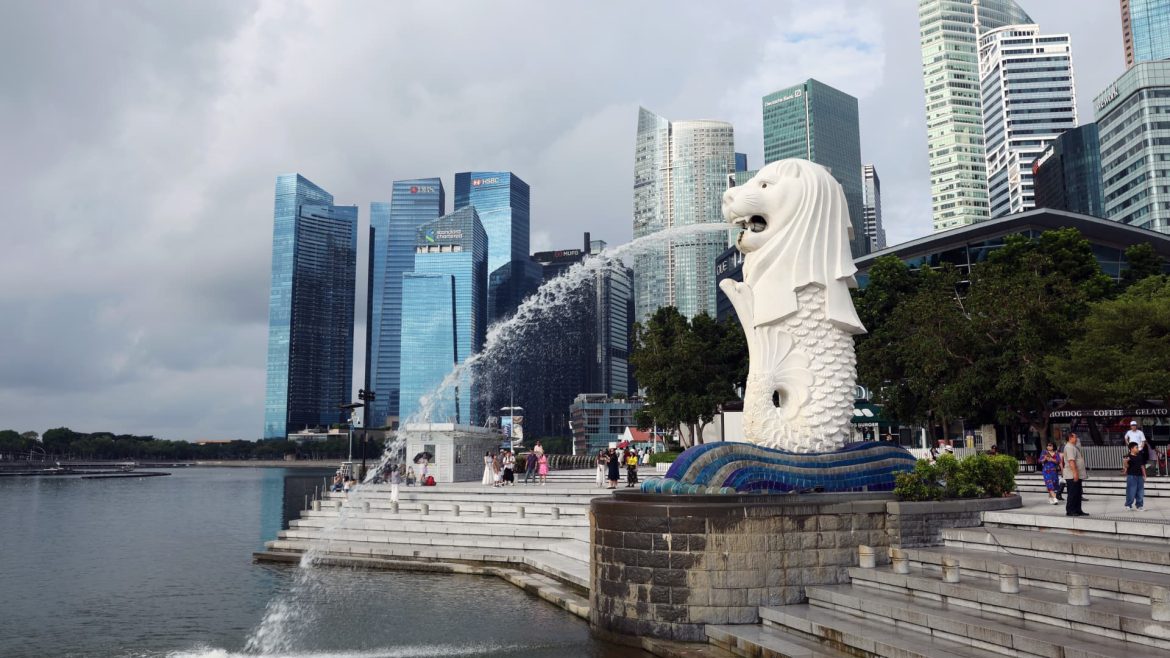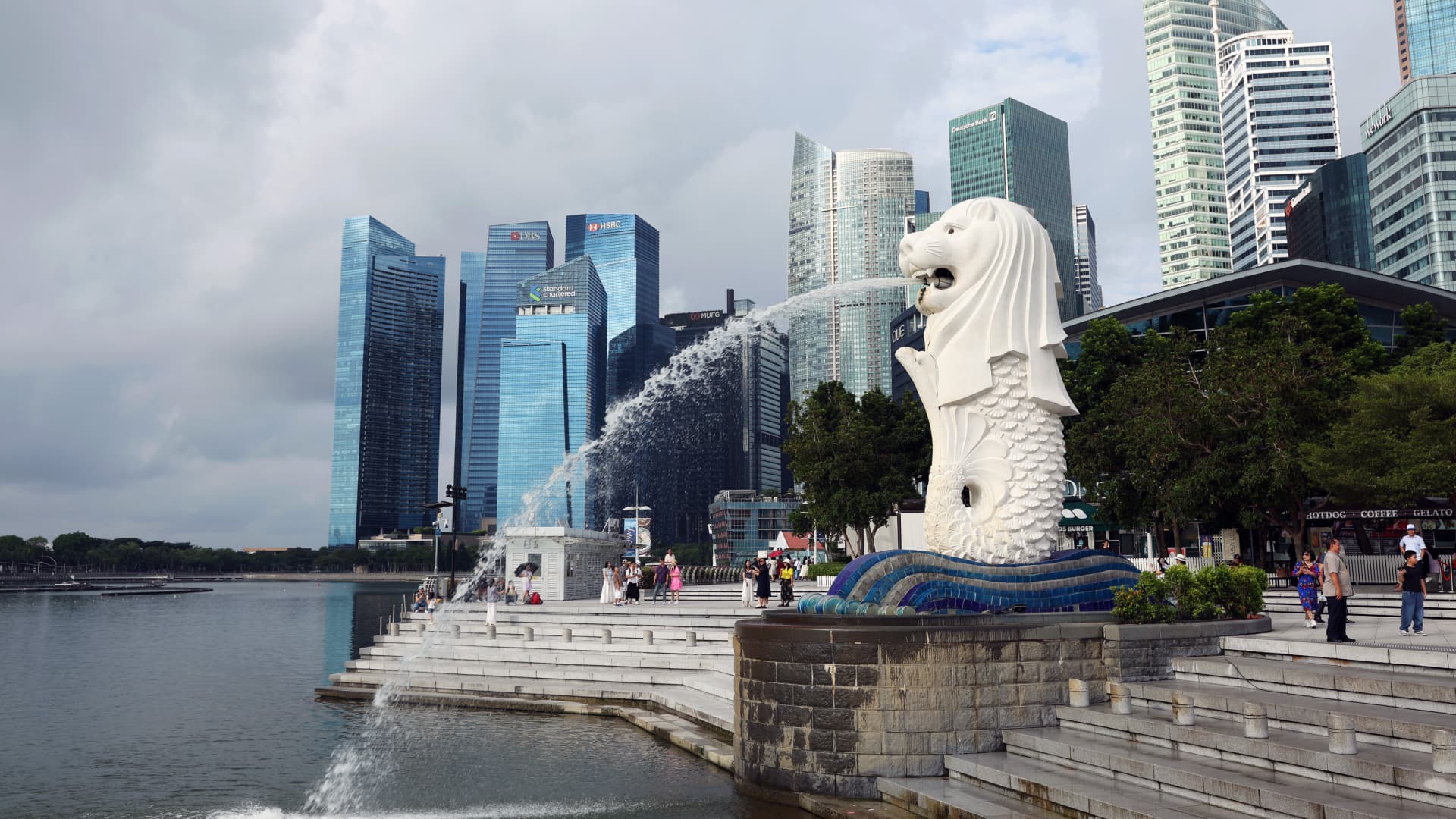Singapore’s Inflation Landscape: A Detailed Analysis of Four-Year Lows and Future Economic Trajectories
Introduction: A Delicate Balancing Act
Singapore, a global financial hub and economic powerhouse in Southeast Asia, is navigating a complex economic landscape marked by a four-year low in inflation. This trend, while seemingly beneficial at first glance, presents a nuanced challenge for policymakers, businesses, and consumers alike. The recent dip in inflation rates to 0.9% year-on-year in early 2025, the lowest in over four years, signals a shift in the economic environment. This report delves into the underlying factors driving this trend, the strategic responses of the Monetary Authority of Singapore (MAS), and the broader implications for the nation’s economic stability and future growth.
The Four-Year Low: A Statistical Snapshot
The current inflation landscape in Singapore is characterized by a notable decline in both headline and core inflation rates. As of early 2025, the headline inflation rate stood at 0.9% year-on-year, a significant drop from the 2.4% average experienced in 2024. Core inflation, which excludes volatile components such as private transport and accommodation costs, also showed a downward trend, registering at 0.5% in March 2025, down from 0.6% the previous month. This moderation in inflation is not uniform across all sectors, with food prices exhibiting some resilience.
Decoding the Drivers of Lower Inflation
The subdued inflation environment in Singapore can be attributed to a confluence of factors, both domestic and global. Understanding these drivers is crucial for formulating effective policy responses and strategic business decisions.
Global Commodity Price Dips
One of the primary contributors to the decline in inflation is the reduction in global commodity prices. Energy and raw material prices have seen a significant drop, which has eased cost pressures on businesses. This, in turn, has been passed on to consumers in the form of lower prices. Given Singapore’s heavy reliance on imports, this factor has had a substantial impact on the overall inflation rate.
MAS Monetary Policy
The Monetary Authority of Singapore has played a pivotal role in managing inflation through its monetary policy. By allowing for a more gradual appreciation of the Singapore dollar’s exchange rate, the MAS has effectively dampened imported inflation. This strategic move has helped to stabilize prices and prevent excessive inflationary pressures. Analysts had anticipated the possibility of policy easing, which has been reflected in the recent monetary policy adjustments.
Weakening External Outlook
The global economic outlook has shown signs of weakening, with major economies facing slowdowns. This has led to reduced demand for Singapore’s exports, putting downward pressure on prices. As a trade-dependent nation, Singapore is directly impacted by global economic trends. The weakening external outlook has contributed to the subdued inflation environment.
Moderate Wage Growth
Despite a tight labor market, wage growth in Singapore has remained relatively moderate. This has prevented a wage-price spiral, which could have exacerbated inflationary pressures. The moderate wage growth has helped to keep inflation in check, contributing to the overall stability of the economy.
Base Effects
It is also important to consider the base effects from the higher inflation rates observed in the previous year. As inflation rates from early 2024 drop out of the calculation, the year-on-year comparisons naturally appear lower. This statistical phenomenon has contributed to the perceived decline in inflation rates.
MAS Response and Policy Adjustments
The Monetary Authority of Singapore, as the central bank, closely monitors inflation and adjusts its monetary policy accordingly. In response to the easing inflation, the MAS has adopted a more accommodative stance. This involves allowing for a slower appreciation of the Singapore dollar’s nominal effective exchange rate (S$NEER) policy band.
Balancing Act
The MAS’s actions reflect a delicate balancing act. While lower inflation provides some relief to households and businesses, excessively low inflation can be detrimental, potentially leading to deflationary pressures and economic stagnation. Therefore, the MAS aims to maintain price stability while supporting economic growth. Further monetary policy easing may be considered if downside inflation risks continue to materialize.
Future Policy Directions
Looking ahead, the MAS is likely to continue monitoring the economic landscape closely. The central bank will need to be prepared to adjust its policies in response to changing economic conditions. The goal is to strike a balance between supporting economic growth and preventing excessive inflation or deflation.
Economic Implications and Future Outlook
The current low-inflation environment has several important implications for Singapore’s economy. Understanding these implications is crucial for policymakers, businesses, and consumers.
Enhanced Consumer Spending
Lower inflation translates to increased purchasing power for consumers. This can stimulate domestic consumption and support economic growth. As consumers have more disposable income, they are likely to spend more, which can boost various sectors of the economy.
Improved Business Competitiveness
Reduced cost pressures can enhance the competitiveness of Singaporean businesses in the global market. This can lead to increased exports and investment, contributing to economic growth. Businesses can benefit from lower input costs, which can improve their profit margins and competitiveness.
Risk of Deflation
Persistently low inflation raises the risk of deflation, a phenomenon characterized by falling prices and wages. Deflation can lead to decreased investment and economic stagnation. It can also create a vicious cycle where consumers delay purchases in anticipation of further price declines, leading to reduced demand and further price declines.
Impact on Savings and Investments
Low inflation can erode the real value of savings and investments. This can affect retirement planning and long-term financial security. Consumers may need to adjust their savings and investment strategies to account for the lower inflation environment.
Potential for Policy Miscalibration
Policymakers need to carefully calibrate their responses to low inflation. Overly aggressive easing measures could lead to asset bubbles and financial instability. On the other hand, inaction could prolong the period of subdued growth. The challenge is to find the right balance between supporting economic growth and maintaining financial stability.
Navigating Uncertainty: Strategies for Sustained Growth
To navigate the uncertain economic landscape, Singapore needs to adopt a multi-pronged strategy focused on long-term resilience and adaptability.
Diversifying the Economy
Reducing reliance on specific sectors and markets can enhance resilience to external shocks. Investing in new growth areas, such as fintech, healthcare, and sustainable technologies, is crucial. Diversification can help mitigate the impact of economic downturns and create new opportunities for growth.
Enhancing Productivity
Improving productivity through innovation, automation, and workforce training is essential for sustained economic growth. This requires fostering a culture of continuous learning and adaptation. Investing in technology and skills development can help businesses stay competitive and drive economic growth.
Strengthening Social Safety Nets
Providing adequate social safety nets, such as unemployment benefits and retraining programs, can help mitigate the impact of economic downturns on vulnerable segments of the population. This can enhance social stability and support economic recovery.
Promoting Innovation and Entrepreneurship
Fostering a vibrant ecosystem for startups and innovation can drive economic growth and create new job opportunities. This involves providing access to funding, mentorship, and regulatory support. Encouraging entrepreneurship can help diversify the economy and drive innovation.
Prudent Fiscal Management
Maintaining prudent fiscal policies, including a balanced budget and a low debt level, is crucial for long-term economic stability. This provides the government with the flexibility to respond to future economic challenges. Prudent fiscal management can help ensure sustainable economic growth and stability.
Conclusion: Embracing Resilience and Adaptability
Singapore’s current low-inflation environment presents both opportunities and challenges. While lower prices provide some relief to consumers and businesses, policymakers must remain vigilant to the risks of deflation and economic stagnation. By adopting a proactive and adaptable approach, focused on diversification, productivity, innovation, and social resilience, Singapore can navigate these uncertain waters and secure its position as a leading global economy. The key is not just to manage the present, but to build a foundation for sustained growth and prosperity in the years to come. Singapore’s ability to adapt and innovate will ultimately determine its success in the face of evolving economic realities.





